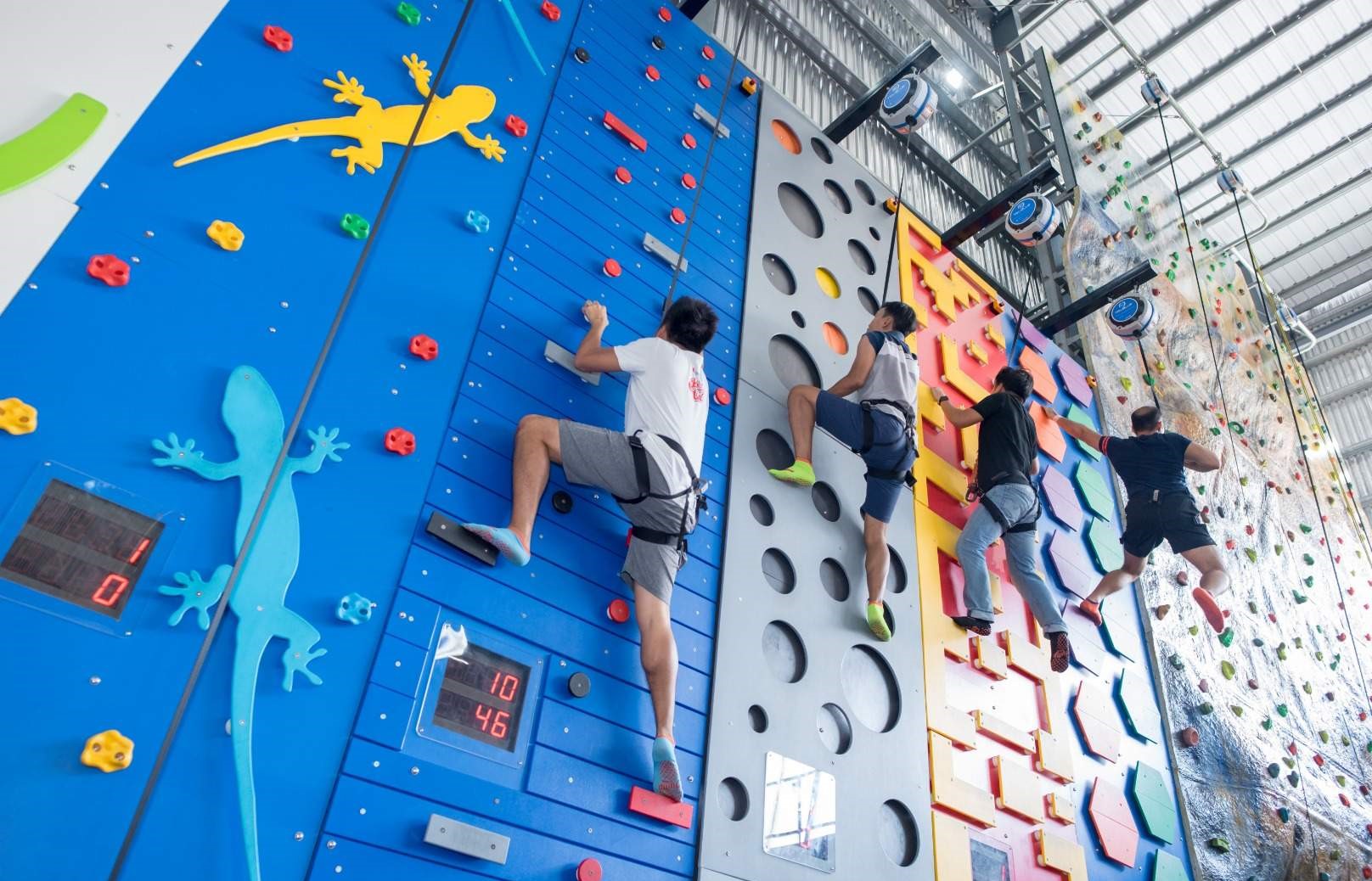1Overview of indoor climbing
1.1 Indoor climbing is a safe environment to learn climbing
Indoor climbing is the best place to learn how to climb. The indoor climbing gym, with walls covered with handrails and bases of different shapes and sizes, allows you to start climbing in a safe, controlled and supervised environment . Indoor climbing is set up so climbers are safe.
Gym staff will ensure that you and your climbing partner have basic safety knowledge, and will check to make sure you are climbing and being supported safely. You can also quickly learn basic climbing skills, including climbing movement techniques, at your local gym. Most gyms offer introductory classes for beginners as well as more advanced climbing skills like belaying and descending.
1.2 Indoor climbing provides lots of learning opportunities
Indoor climbing offers a wealth of learning opportunities for beginner climbers with classes, private lessons, clinics led by elite climbers, and you can also observe experienced climbers.
One of the best ways to improve your climbing, other than practice, is to simply sit down in a crowded indoor gym and watch the best climbers. Observe how they place their feet on different footholds, how they hold their hands on the wall, and how they overcome the difficulties of climbing to learn from experience for themselves.
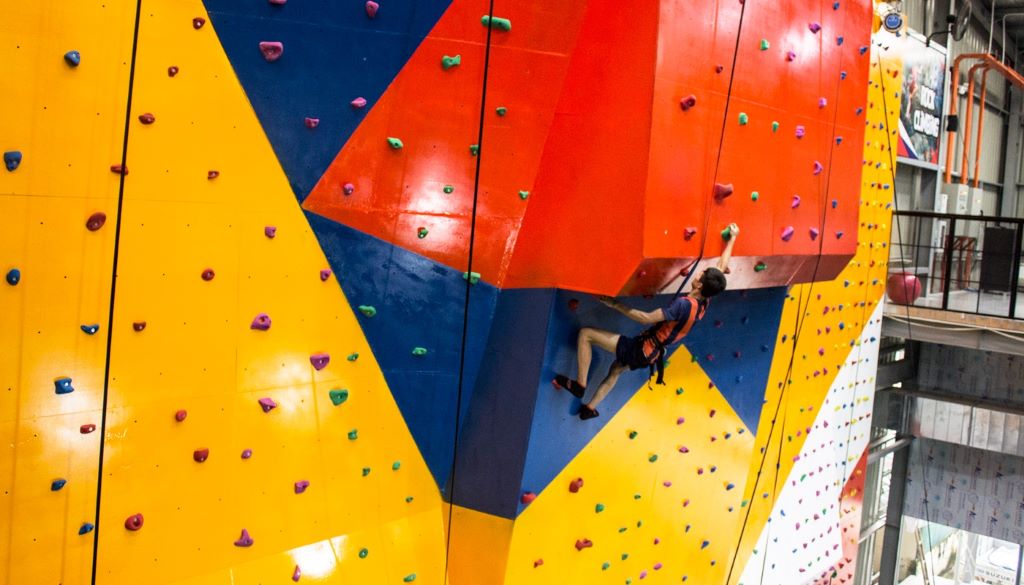
Indoor climbing gives you the opportunity to learn and make new friends
1.3 There is no bad weather when climbing indoors
Not only is it a great place to learn how to climb, indoor climbing is never a problem with the weather. Is it too cold, snowy, or rainy outside? You don’t have to worry about this, just pack your climbing gear with shoes, harness, and chalk bag, and head to the indoor climbing area. Climbing gyms allow climbers to practice and train all year long and to maintain their climbing fitness until the weather improves, they can take advantage and go out to practice on the mountains. real mountain.
1.4 Meet new climbing friends
Indoor climbing is perfect not only to learn to climb, but also to meet other climbers, find companions with similar abilities to yourself and socialize with your local climbing community by joining Participate in visual programs and lectures. If you don’t have a regular climbing partner, go to the gym and post a note on the bulletin board to find a climbing buddy. Most gyms also have bouldering walls where you can practice difficult moves and boulder climbing skills on your own.
See more: Summer is here, let’s go to West Lake water park to cool off!
2Forms of indoor climbing
2.1 Climbing rock blocks
No harness or rope required, bouldering involves routes close to the ground. A thick pad acts like a protective mat underneath you. Some gyms also require assistants, who help prevent falls from injuring your head and neck.
Block climbing is a great way to build skill because you can just focus on using your strength and balance to keep yourself on the wall. New climbers appreciate its simplicity; Skilled climbers often enjoy the challenge of more difficult rock climbing routes.
2.2 Climb with anchor at the top
This is where a new climber will begin their introduction to the world of rope climbing. When you top climb, the rope is tied to an overhead anchor in the gym. You will tie one end of the rope; The other end of the rope is held by a belayer – this person will hold and control the rope to catch you in case of a fall. The bearers can be a trained staff member, a friend who has learned to block, or an automatic belay device.
2.3 Free climbing
Once you have become a proficient alpine climber, your next step is free climbing. When free climbing, you will tie on one end of the rope and clip it with a double-ended rope hook attached to a peg on the wall of the indoor climbing area. Again, you will have a support person.
Indoor free climbing is very similar to outdoor sport climbing, except that when climbing indoors, the two-way rope hook is already in place. The challenge with free climbing is that if you slip or miss the next belay, you will fall a short distance back to the belay you just passed before. This can be a longer and more painful fall than climbing with an anchor at the top.
3Tips for climbing indoors for the first time
– Your goal is not to reach the top of a climbing route; Your goal is to overcome challenges and enjoy each success as you progress.
– Remember that your legs are stronger than your arms, so focus on ways to improve leg friction and leg position.
– Take the time to learn different effective ways to help you overcome challenges faster.
– Follow more experienced climbers to learn their techniques, but don’t expect to be able to imitate them right away.
– When you’re ready to start on your own, take the time to choose a good partner or mentor, which is one of the most important factors in mastering climbing.
4A few notes – Experience in indoor climbing in Hanoi
– Comfortable clothes, good elasticity, not restrictive or uncomfortable. If it is a tight-fitting item, it must ensure comfort and ease of movement.
– Your shoes must be non-slip and light enough not to become a burden on your hands. Most artificial climbing sites have shoe rental services.
– Before climbing, don’t just focus on climbing your way, but listen to the guide’s instructions first. Surely those instructions will help you know how to climb the ice as well as maintain your hand strength when participating in indoor climbing games.
– Even if the staff wears a safety belt before climbing, you should still check to ensure safety.
– If you want to learn in-depth about professional indoor climbing, you can join indoor climbing clubs in Hanoi to study, practice, and supplement your skills together.
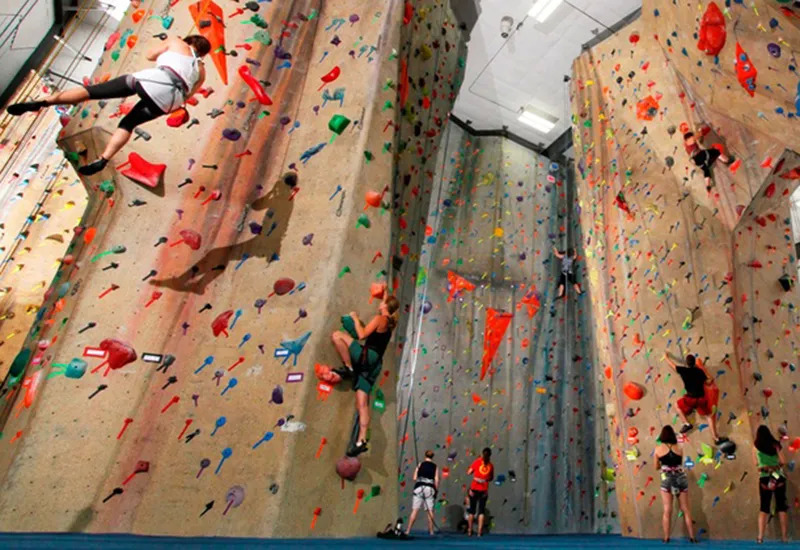
First-time indoor climbers need to be careful before starting
5Essential indoor climbing equipment
As for equipment, find out what your gym offers and how much it costs, especially for your first time. And then the time comes when you want your own device:
– Safety belt: this is a must for climbing and is often the most versatile part for both indoor and outdoor climbing.
– Carabiner lock: this is required to attach your belay device to your harness.
– Chalk and chalk bag: Chalk is used to keep fingers and palms dry, helping you avoid slipping.
– Hiking shoes: Flexible shoes with sturdy soles that fit comfortably without hurting your feet. A hiking shoe sales professional can help you choose a shoe that fits you and meets your needs.
– Climbing rope: For safety reasons, many climbing gyms provide climbing ropes. Some gyms require you to bring your own rope to free climb.
6Suggest some indoor climbing locations in Hanoi
– Vietclimb. Address: No. 40 An Duong Lane, Hanoi.
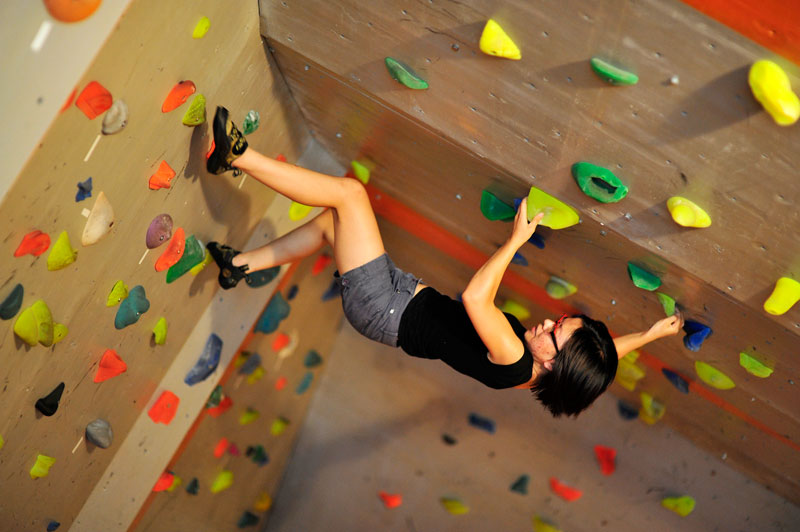
Experience in indoor climbing in Hanoi – Vietclimb
– Jump Arena. Address: No. 1 Tang Bat Ho Street, Pham Dinh Ho Ward, Hai Ba Trung District, Hanoi.
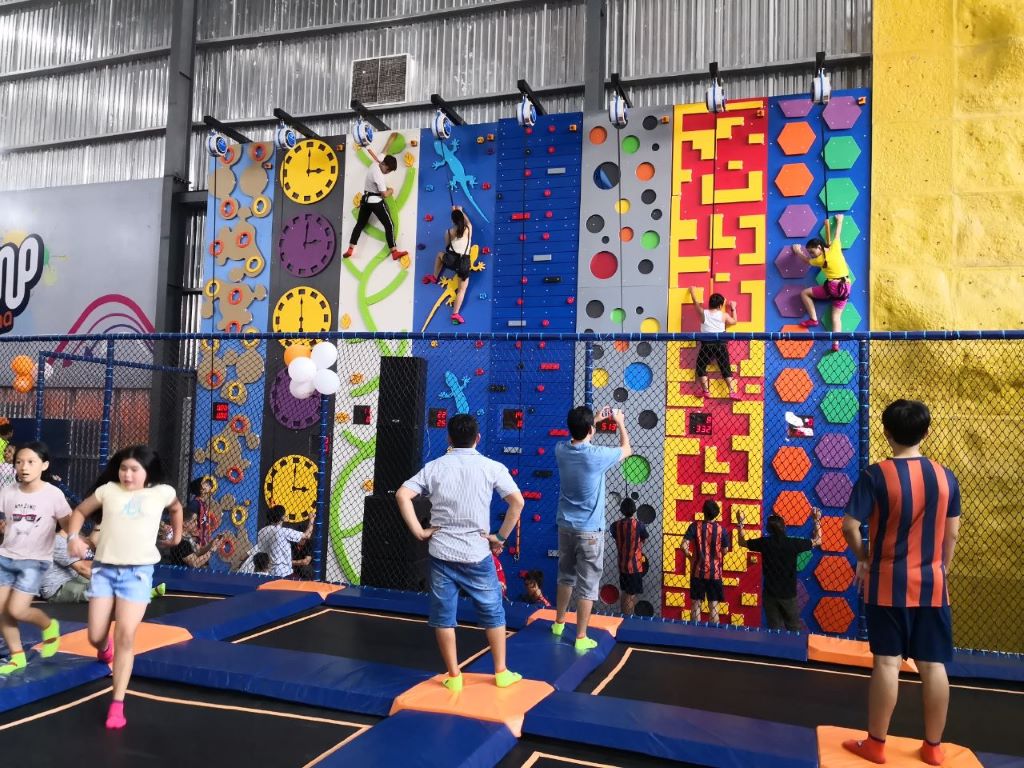
Jump Arena’s spacious gym
– Kinder Park. Address: 614 Lac Long Quan Street, Phu Thuong, Tay Ho, Hanoi.
– Vincom Mega Mall Royal City. Address: 72A Nguyen Trai, Thuong Dinh, Thanh Xuan, Hanoi.
See more: Test your cardiovascular fitness with the top 5 adventure amusement parks in Hanoi
Indoor climbing is a sport that increasingly attracts more members to exercise, relieve stress and meet more friends. Hopefully this article about indoor climbing experiences when going to Hanoi will bring you some reference value and hope you will love this modern sport.
